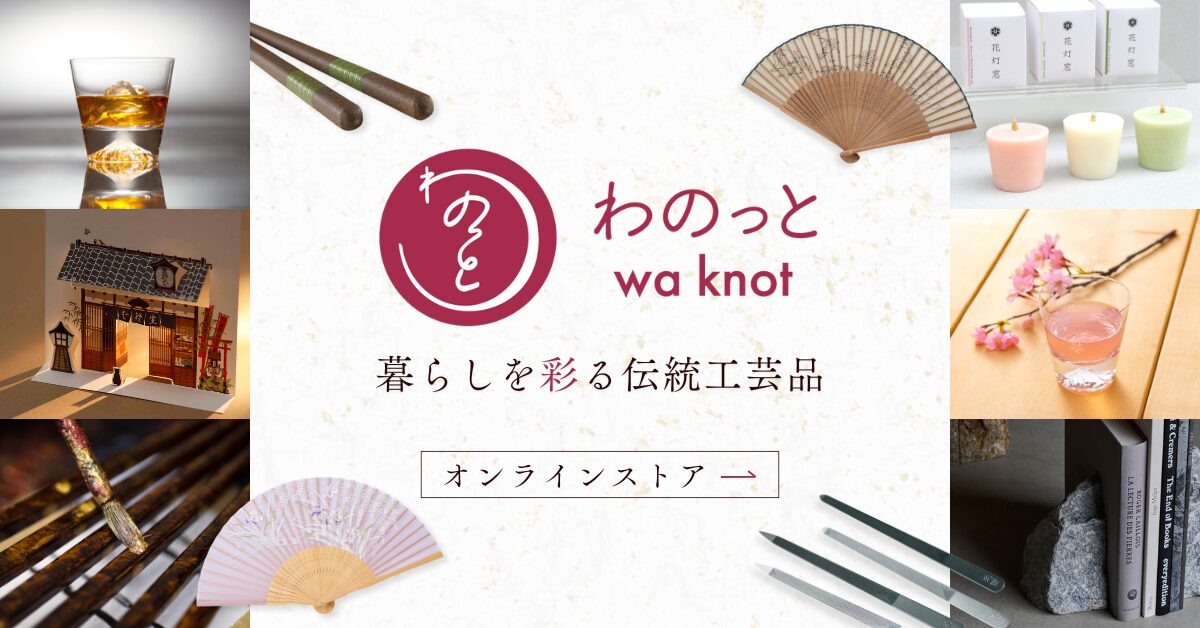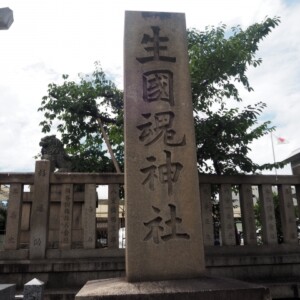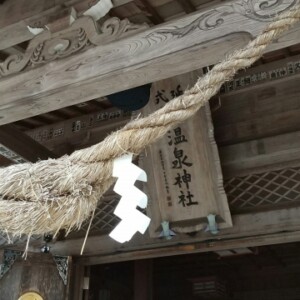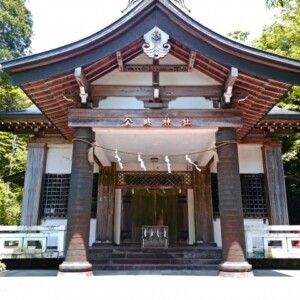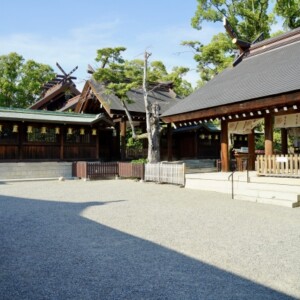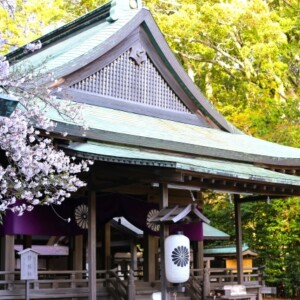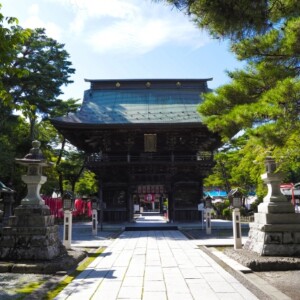
Hakone Motomiya Shrine|Complete guide to the history, highlights, and worship information of this historic shrine
Komagatake, is a sacred place of mountain worship with a history of more than 2,000 years. It has been loved by many worshippers as one of the three shrines to visit, along with Hakone Shrine and Kuzuryu Shrine.
Outline and Basic Information on Hakone Motomiya Shrine
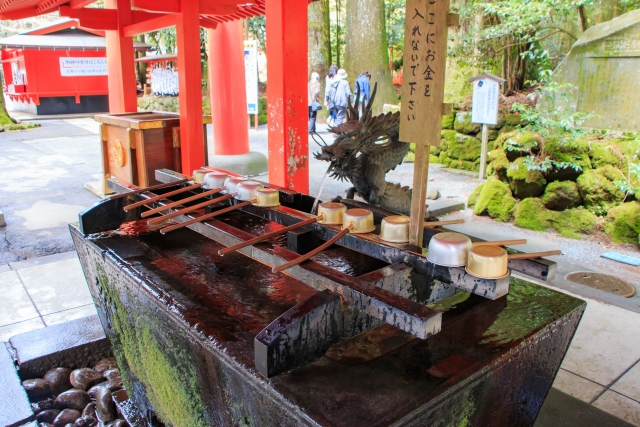
Hakone Motomiya Shrine is located on the summit of Komagatake Mountain (1,356 meters above sea level) in Hakone-cho, Ashigarashita-gun, Kanagawa Prefecture, and is positioned as the inner shrine of Hakone Shrine. Because of its unique location atop the mountain, the shrine is also called “Shrine in the Sky,” and is characterized by its open, unobstructed precincts. The current shrine pavilion was rebuilt in 1964, and the beautiful vermilion-lacquered worship hall looks divine against the blue sky.
History and Origin
The history of Hakone Motomiya Shrine dates back to about 2,400 years ago, and since ancient times it has been revered as a center of mountain worship, with its sacred mountain, Kamiyama, the highest peak of Hakone Mountain, as its deity. Komagatake is regarded as a sacred place to view and worship the mountain, and as one of the most sacred places in the Kanto region, many ascetic practitioners and worshippers have climbed the mountain.
Komagatake has been a sacred place of worship since before the Nara period (710-794), and is still revered by many people today as a valuable shrine that conveys an ancient form of faith that dates back to before the Nara period. The current shrine pavilion was built in 1964 with a donation from Kojiro Tsutsumi, founder of the Seibu Group, and plays an important role in connecting ancient beliefs to the present day.
Deities and Benefits
The Hakone Grand Shrine is dedicated to the Hakone Grand Deity (Ninigi no Mikoto, Kihanasakuyahime no Mikoto, and Hikohibidemi no Mikoto), who is believed to bring blessings for the fulfillment of one’s desires, the fulfillment of love, and the improvement of one’s work luck. It is said to have especially strong power rooted in mountain worship, and many worshippers visit the shrine to make a wish at an important stage of their lives.
Because the shrine is built on a sacred mountain, there is no main shrine but only a hall of worship, which is a major feature of the shrine. This form of worship is a prototype of ancient mountain worship, and visitors can experience the ancient form of worship in which prayers are offered directly to the sacred mountain.
Highlights and Features of Hakone Motomiya Shrine
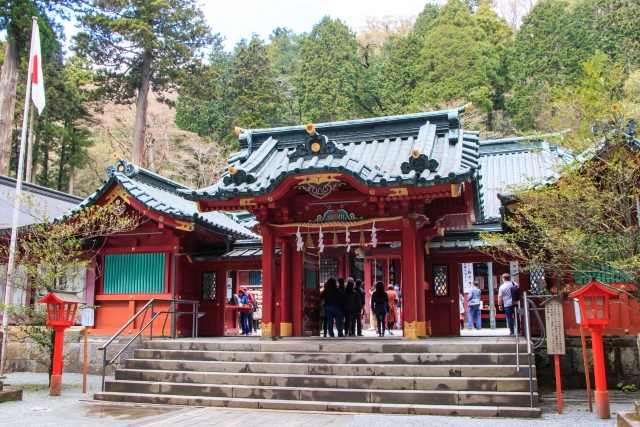
The greatest attraction of Hakone Motomiya Shrine lies in its unique location and sacred atmosphere. Many visitors are surprised to see the bleak landscape of the mountaintop, which is quite different from that of a typical shrine, as they step off the Komagatake ropeway and enter the mountaintop. The vermilion-lacquered shrine pavilion standing alone on the open mountaintop without tall trees creates a mysterious atmosphere that is truly otherworldly.
Architectural and Structural Attractions
The current shrine pavilion is relatively new, having been rebuilt in 1964, but the beautiful vermilion-lacquered worship hall is extremely striking in contrast with the blue sky. The shrine is characterized by the fact that it has no main hall but only a worship hall, since the mountain is the sacred object of worship, and this is a valuable example of the ancient form of mountain worship that has been handed down to the present day.
The torii gate in front of the worship hall is also painted in vermilion, giving it a distinctive presence in the otherwise barren landscape of the mountaintop. The building itself is not large, but its 360-degree view of the mountaintop makes its presence felt.
The beauty of nature and landscape
The view from Hakone Motomiya is known as the best in Hakone. Fuji, Lake Ashi, Sagami Bay, and Suruga Bay on clear days, and as far as the Southern Alps, Boso Peninsula, and Izu islands can be seen. Fuji is especially popular as a perfect photo spot.
The view is beautiful in all four seasons, with fresh greenery in spring, blue skies in summer, autumn leaves in fall, and snowy landscapes in winter. Because of its location at the top of the mountain, the weather changes frequently, and you can sometimes see a fantastic scene surrounded by a sea of clouds.
Cultural Properties and Important Historic Sites
To the left of the worship hall are the remains of ancient rituals, scattered with large rocks that have been artificially carved. These rocks are thought to be the remains of rituals related to ancient mountain worship, and are valuable historical sites that tell the long history of Hakone Motomiya.
Beside the torii gate, there is a special rock called “Bakoseki,” which is believed to have been used by a god on a white horse. This rock is said to be the stage of the legend of the descent of a god on a white horse, and the hole on the rock is said to be the hoof prints of the horse that descended from the rock. There is a mysterious legend that the water in this hole has never dried up, and it is carefully protected as an important historical site that conveys the traces of the white horse faith to the present.
Guide to Worship and Visiting
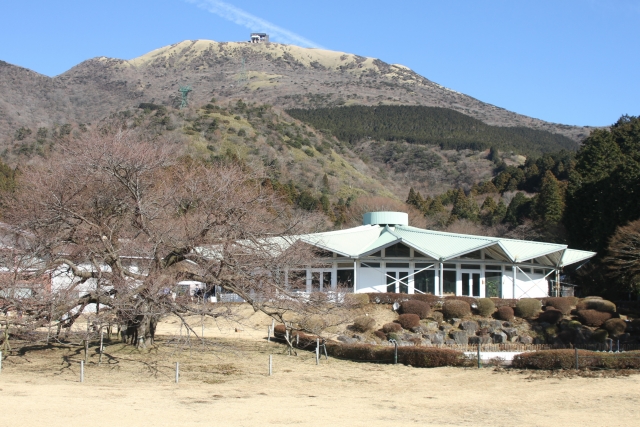
The Komagatake ropeway is the most common way to visit Hakone Motomiya Shrine, and it is about an 8-minute walk from the summit station. Because of the special environment at the top of the mountain, this is a rare place that offers a different worship experience from ordinary shrines. Visitors are advised to be aware of changing weather conditions and to wear comfortable walking clothes and shoes when visiting the shrine.
Worship Etiquette and Manners
While worship at Hakone Motomiya Shrine is conducted in the same manner as at most shrines, it is important to be especially mindful of the sacred nature of the mountaintop location. Before passing through the torii gate, bow and bow in front of the hall of worship. Since this is a special shrine with Mt. Kamiyama as its sacred body, it is required to worship with an even more reverent attitude.
The gravel path at the top of the mountain is difficult to walk on, so please be careful of your footing when visiting the shrine. Also, because of the high altitude, the weather can change easily and the wind can be strong. Bring a hat and a light jacket, and be sure to visit the temple in a safe manner. Ancient ritual sites and historic sites, such as the Bafureishi, are also carefully protected, so please be careful not to touch or climb on them.
Attractions of Visiting the Three Shrines
Hakone Motomiya Shrine, together with Hakone Shrine and Kutouryu Shrine, is known as one of the “Hakone Sanja mairi” (visits to three shrines in Hakone). Many worshippers visit the three shrines in order to receive greater blessings from the Hakone Grand Deity and the Kutouryuu Deity. There is no particular order of visitation, and it is considered important to visit the shrines in a sincere manner according to one’s own convenience.
Each of the three shrines has its own unique characteristics, and Hakone Motomiya Shrine, as a sacred place of mountain worship, is considered suitable for the fulfillment of one’s heart’s desire and important life wishes. Hakone Shrine on the shore of Lake Ashi is known for traffic safety and good luck, and Kutouryu Shrine for love fulfillment and matchmaking.
Red Seal and Charm Information
Red seals and amulets at Hakone Moto-gu Shrine are generally available at Hakone Shrine on Lake Ashi. Since no priest is stationed at Hakone Moto-gu Shrine, it is recommended to check with the Hakone Shrine in advance if you wish to receive a red seal. Especially on weekdays, the shrine priest is often absent, so visiting on weekends or holidays is a sure way to visit.
The Hakone Shinto Shrine also carries the common amulet and seal for the three Hakone shrines, which are popular with many visitors as a commemorative souvenir of their visit to the three shrines. Special amulets related to the mountain worship unique to Hakone Motomiya may be available, so please contact Hakone Shrine for details.
Access/Use Information
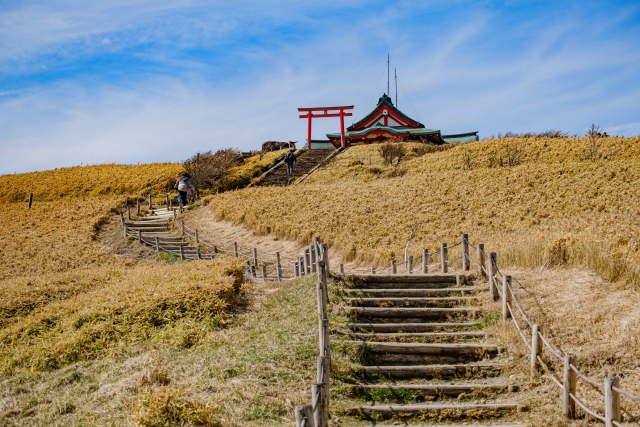
The Komagatake ropeway is required to visit Hakone Motomiya Shrine. When using public transportation, the most common route is to take a bus from Hakone-Yumoto Station to Hakone-en and then take the ropeway to the top of the mountain. If you drive your own car, you can use the parking lot of Hakone-en, but since it is expected to be crowded during the tourist season and on weekends, we recommend that you plan ahead of time.
Traffic Access
By train or bus, take the Izu Hakone Bus bound for “Kojiri/Hakone-en” from Hakone-Yumoto Station, and you will arrive at the Hakone-en stop in about 65 minutes. From Hakone-en, transfer to the Komagatake Ropeway to reach the summit station in about 7 minutes, from where you can reach Hakone Motomiya in about 8 minutes on foot.
From Odawara Station, you can take the Hakone Tozan Bus to Moto Hakone in about 1 hour, and from there take the Lake Ashinoko sightseeing boat or a cab to Hakone-en. The Hakone Free Pass also offers a 10% discount on the Komagatake ropeway.
By private car, Hakone-en can be reached in about 30 minutes from the Gotemba Interchange of the Tomei Expressway or about 45 minutes from the Odawara-Nishi Interchange.
<Address> 139 Moto Hakone, Hakone-cho, Ashigarashita-gun, Kanagawa 250-0522 (in Hakone-en)
Hours of Admission, Fees, and Parking Information
The Komagatake Ropeway operates from 9:00 to 16:50 (last up at 16:30, last down at 16:50), with services running every 20 minutes. The fare is 1,600 yen round-trip for adults and 800 yen round-trip for children. The fare is scheduled to be revised on April 1, 2025, so please check the official website for the latest fare.
There is no special time limit for visiting Hakone Motomiya Shrine, but visitors must descend the mountain during the ropeway’s operating hours. If you wish to receive a red seal, it is recommended to arrive before 16:00.
Parking for 312 passenger cars and 15 chartered buses is available at Hakone-en for a fee. Since the parking lot is often full during the tourist season and holidays, please consider arriving early or using public transportation. In winter, snow and icy conditions are possible, so studless tires and chains should be prepared.
Reference sites
Hakone Shrine (Kutouryuu Shrine) official website: https://hakonejinja.or.jp/
Hakone Komagatake Ropeway|Hakoneen: https://www.princehotels.co.jp/amuse/hakone-en/ropeway/


